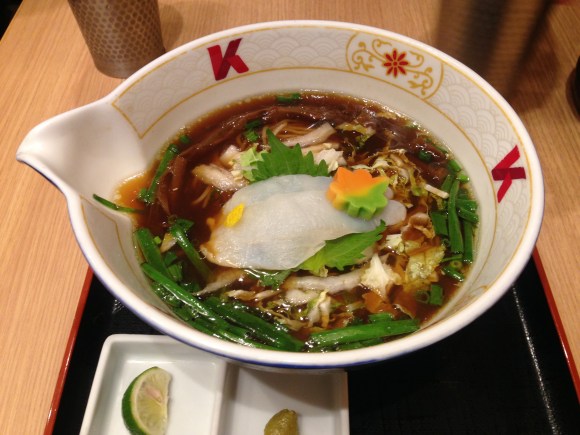
Fugu, one of Japan’s most gourmet foods, is the ramen star of the classy Ginza neighborhood.
Like most forms of pasta, ramen noodles themselves don’t have much flavor, and so the deciding factor when picking a ramen restaurant is the broth. The three most popular broth varieties in Japan are tangy miso (most common in the north), mild soy sauce (a favorite of east and central Japan) and tonkotsu, a savory pork stock (prevalent in the western part of the country).
But if none of those tempts you, in Tokyo there’s a restaurant that makes its ramen broth from fugu, also known as Japanese blowfish…also known as the poisonous seafood that will kill you if it’s not prepared properly.
▼ Cute, deadly, and delicious, the fugu really is the complete package.
Tokyo’s Ginza is best known as a neighborhood of fancy boutiques and exclusive cocktail lounges. But it’s also where you’ll find the confederation of ramen restaurants called Keisuke. Each branch has its own unique take on the noodle dish, and at Hachidaime Keisuke, located in the newly built Tokyu Plaza Ginza building (where you’ll also find the gorgeous “Japanese garden” green tea dessert), the specialty is ramen that not only has fugu in its broth, but a slice of the coveted delicacy placed atop the noodles.
As with many ramen restaurants, you purchase a meal ticket from a vending machine before you sit down. If you’ve never done this before, there’s no need to worry. Keisuke has English menus with numbers that correspond to the button to be pressed for each item.
The basic ramen in salty fugu stock broth costs 1,100 yen (US$10), which is a little on the expensive side for ramen. Considering that the restaurant is in the high-rent district, and also that fugu is a classy delicacy, though, it’s a reasonable price. Ramen with a mixed fugu stock/soy sauce broth, meanwhile, starts at 1,250 yen.
▼ Salty
▼ Soy
Before digging in, take a moment to appreciate the thought that’s gone into the tableware. Not only is the inside of the bowl decorated with stylized K’s (for “Keisuke”), the outside is adorned with fugu illustrations.
▼ Pausing for a bit of art appreciation will also give you some time to work up the courage to eat the fugu.
Starting with the salt broth, there’s an immediate seafood kick, with the rich flavors of the fugu providing plenty of flavor but with little, if any, of the unpleasant aftertaste that sometime comes with gyokai (fish stock) ramen. The soy broth has slightly less fish flavor, thanks to the sweetness of the soy. In both varieties, Keisuke also makes the smart decision to let the marque ingredient do most of the work by not loading up its ramen with tons of pungent green onion or other heavy flavors.
Speaking of the star of the show, sitting right in the center of the bowl is a slice of fugu. You can eat it right away, or let it sit for a while to let it contribute even more of its flavor to the broth.
When you do take a bite, you’ll find that fugu has a pleasantly firm, meaty texture. The slice of blowfish is accompanied by a zest of yuzu, a lemony citrus fruit, that adds just a touch of tart complexity.
Also sharing space with the fugu in the bowl are hakusai (Chinese cabbage) and a leaf of shiso, a herb that’s often referred to as “Japanese basil.” The shiso’s crisp, clean taste makes it a delicious way to cleanse your palate mid-bowl, letting the flavors wash over your taste buds anew in the meal’s second half.
Each order of ramen also comes with an extra-long stalk of menma (fermented bamboo shoots). While menma are a common ramen ingredient, we’ve never seen them cut in such gigantic strips before.
▼ An added bonus to the visual impact is that if you don’t care for menma, you’ve only got one piece to pick out.
By this point you’ve probably noticed that Keisuke’s bowls aren’t perfectly round. Instead, there’s an extension at one spot, which serves two purposes. First, it makes the bowl, when viewed from directly above, look sort of like an in-profile fugu.
But the extension also serves as a pouring spout. For an additional charge, you can get an order of white rice to pour your left-over broth onto once you’ve finished all your noodles. This is Keisuke’s take on ochazuke (rice with green tea), and the ramen even come with wasabi, a common ochazuke seasoning, and a wedge of citrus fruit, the latter a true ramen rarity.
Should Keisuke’s ramen give you a taste for fugu, you’ll be happy to know that deep-fried blowfish is also on the menu. And if that has you wanting still more fugu, being in Ginza means you’re only a few subway stops from the Yamaguchi Prefecture specialty store, which sells canned fugu that you can take home to munch on at your leisure.
Restaurant information
Hachidaime Keisuke / 八代目けいすけ
Address: Tokyo-to, Chuo-ku, Ginza 5-2-1, Tokyu Plaza basement level 2
東京都中央区銀座5-2-1 東急プラザ地下2F
Open 11 a.m.-11 p.m.
Website
Photos ©SoraNews24
Follow Casey on Twitter for more of his professional eating.

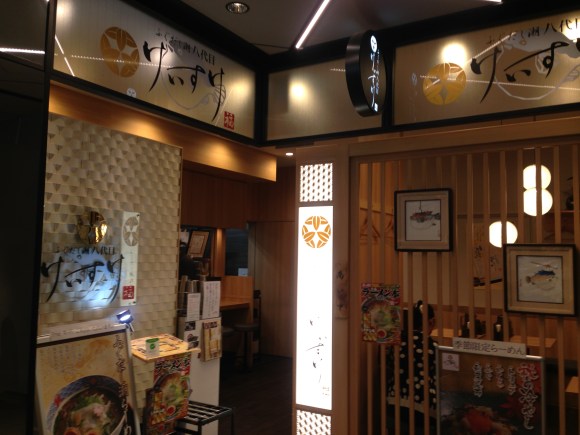
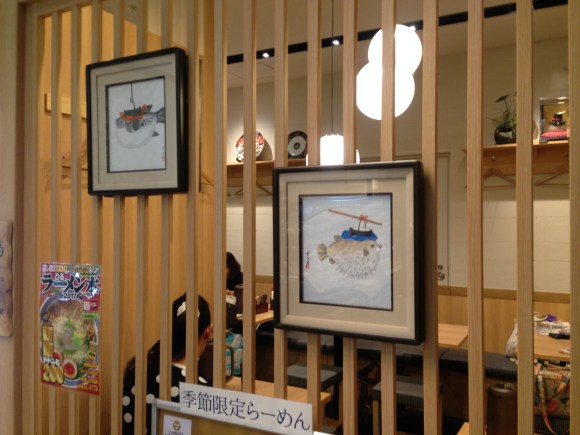
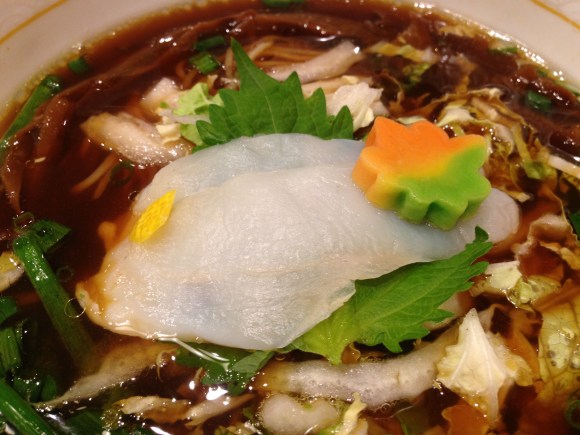
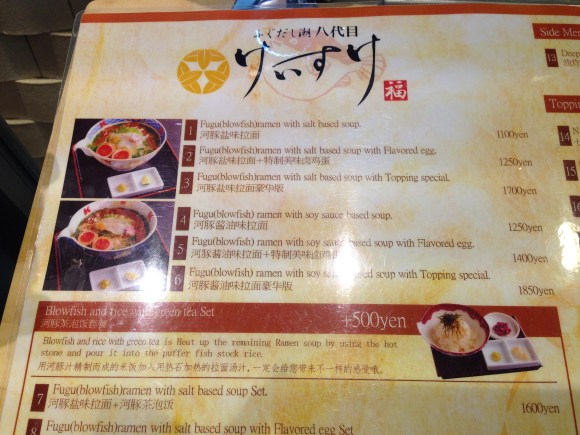
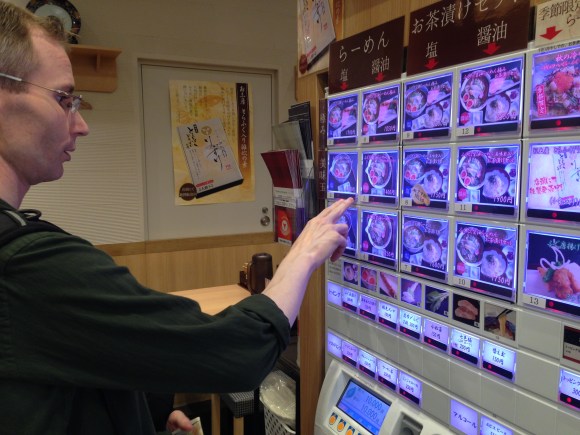
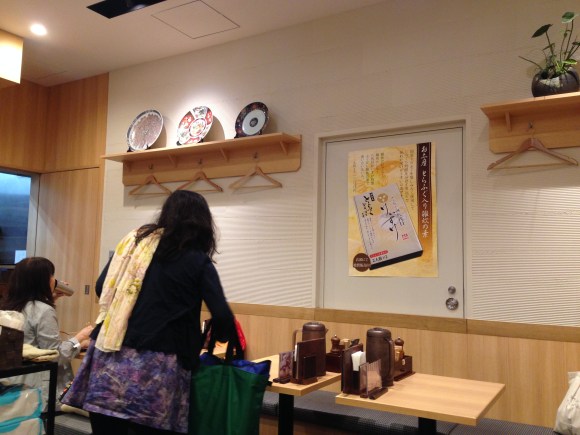
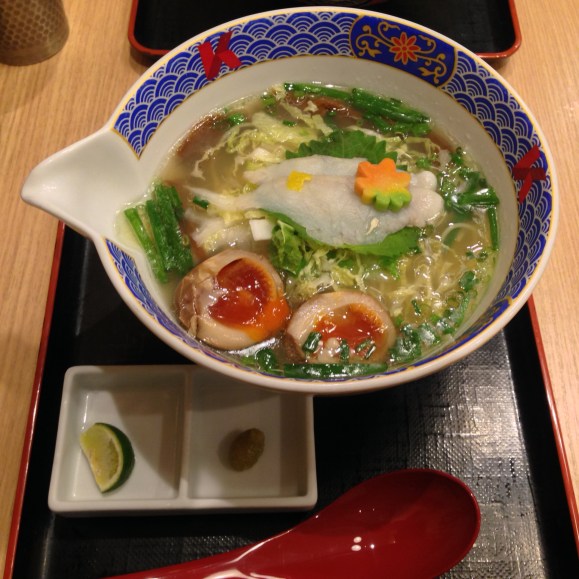
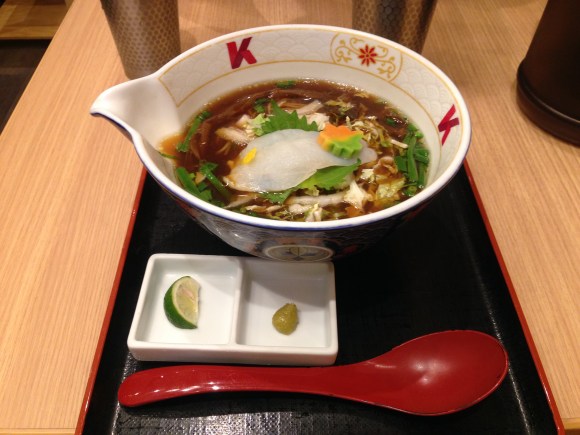
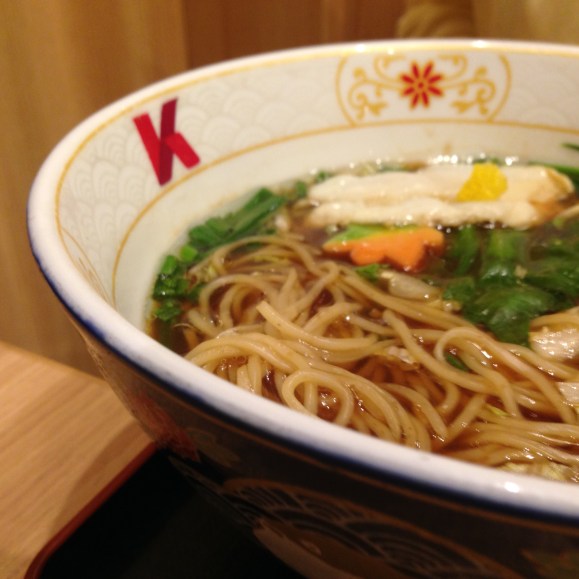
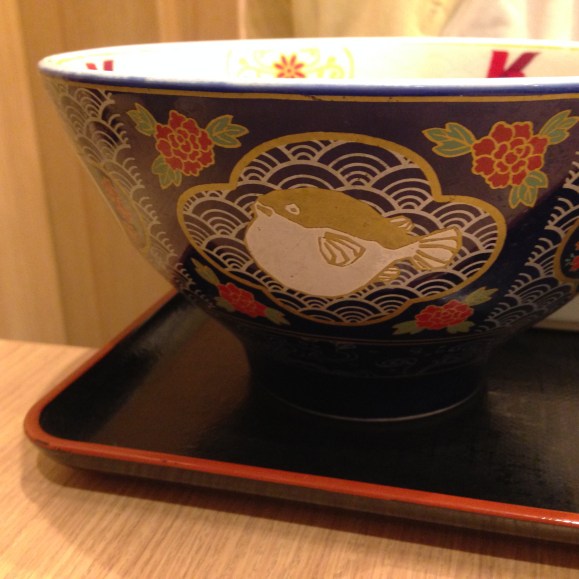
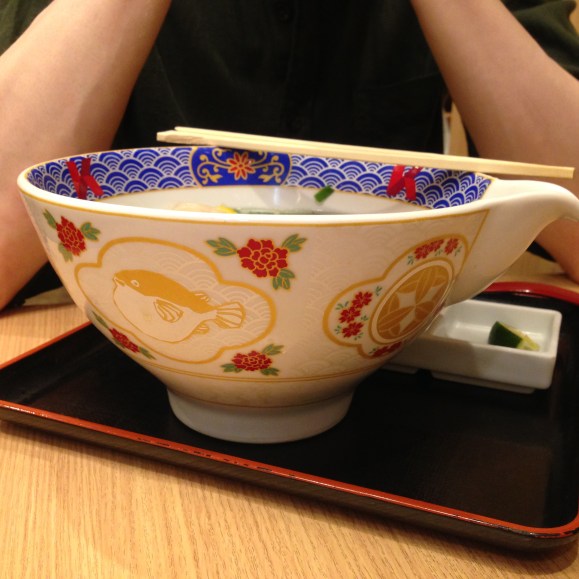
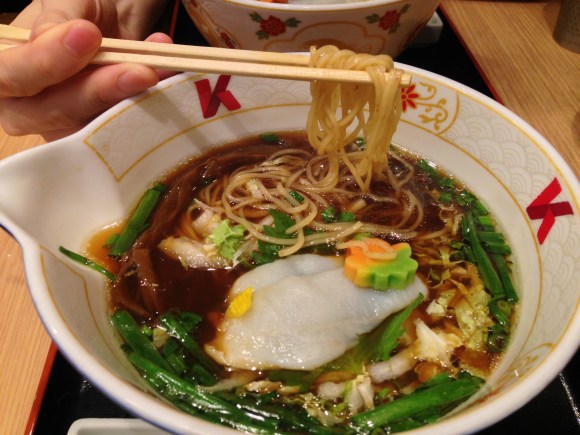
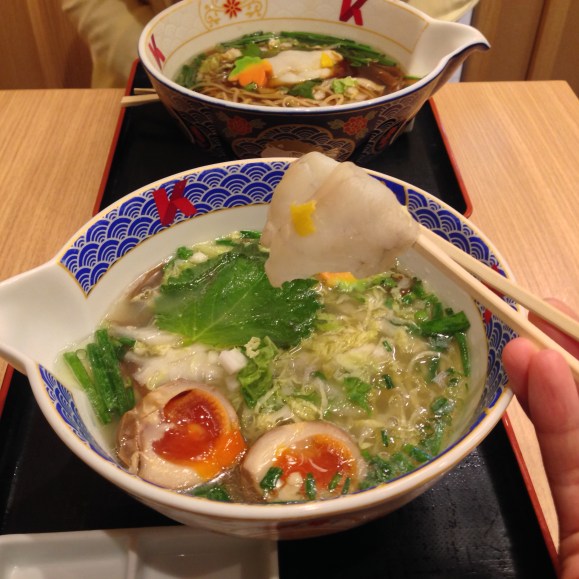
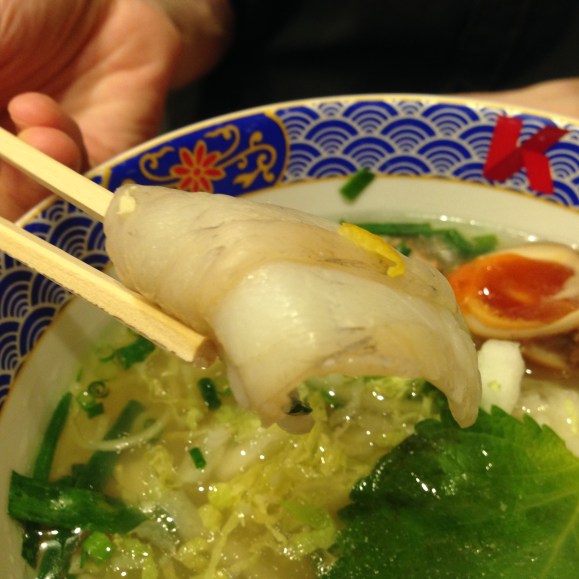
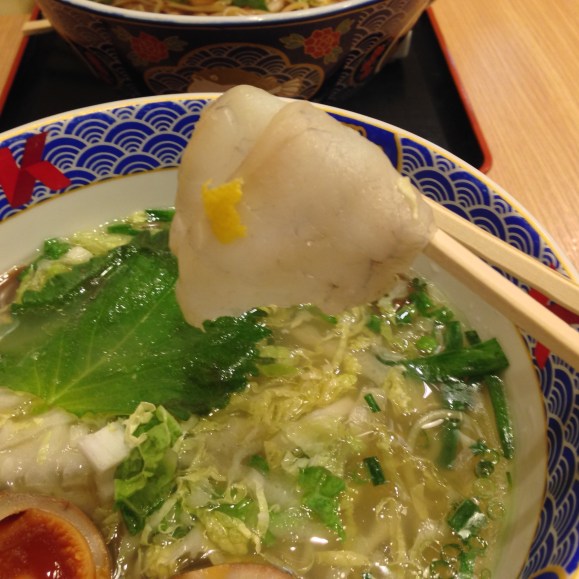
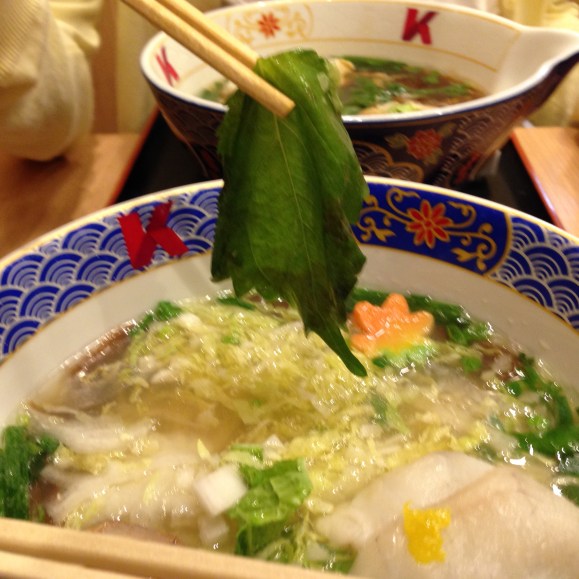
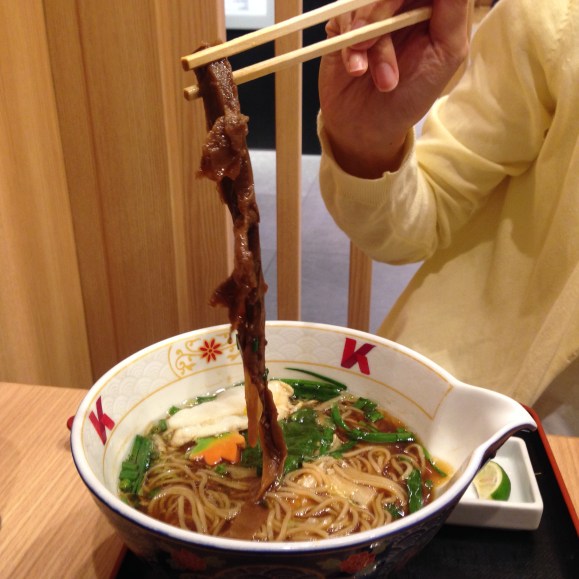
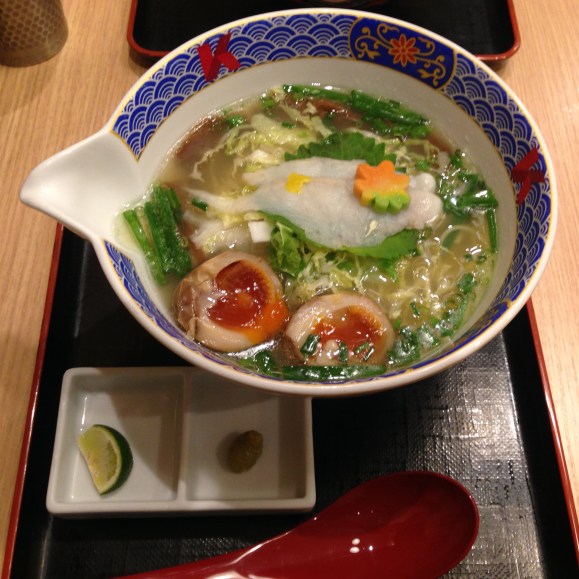
 Poisonous blowfish instant ramen on the way from Cup Noodle’s Nissin
Poisonous blowfish instant ramen on the way from Cup Noodle’s Nissin You can now get fugu, Japan’s poisonous blowfish, for under a buck at revolving sushi restaurants
You can now get fugu, Japan’s poisonous blowfish, for under a buck at revolving sushi restaurants 2,500 yen for Tokyo ramen? High-end noodles in the high-rent Ginza district are totally worth it
2,500 yen for Tokyo ramen? High-end noodles in the high-rent Ginza district are totally worth it Kyoto’s THICKEST ramen is crazy and crazy-delicious【Taste test】
Kyoto’s THICKEST ramen is crazy and crazy-delicious【Taste test】 10-year-old Japanese girl is youngest person ever certified to prepare deadly poisonous blowfish
10-year-old Japanese girl is youngest person ever certified to prepare deadly poisonous blowfish We revisited Sweets Paradise after a decade to see if Japan’s dessert buffet still delivers
We revisited Sweets Paradise after a decade to see if Japan’s dessert buffet still delivers Should you dip your cake in sake? One Japanese brewer says no, but actually yes【 Taste test】
Should you dip your cake in sake? One Japanese brewer says no, but actually yes【 Taste test】 7 great places to see Mt. Fuji from without having to climb it
7 great places to see Mt. Fuji from without having to climb it Japanese beef bowl chain Sukiya’s 2026 Smile Box lucky bag basically pays for itself
Japanese beef bowl chain Sukiya’s 2026 Smile Box lucky bag basically pays for itself Play games, learn, and get your fortune at Ginza’s limited-time Tsunaguu “Shrine of the Future”
Play games, learn, and get your fortune at Ginza’s limited-time Tsunaguu “Shrine of the Future” TikTok releases its Year in Music 2025 – Japan’s Top 10 Songs ranking
TikTok releases its Year in Music 2025 – Japan’s Top 10 Songs ranking Cyberpunk anime meets traditional culture in Ghost in the Shell gold leaf Japanese changing screens
Cyberpunk anime meets traditional culture in Ghost in the Shell gold leaf Japanese changing screens Japan’s otoshidama tradition of giving kids money at New Year’s gets a social welfare upgrade
Japan’s otoshidama tradition of giving kids money at New Year’s gets a social welfare upgrade Terrace House star Hana Kimura’s suicide proceeding as a criminal case
Terrace House star Hana Kimura’s suicide proceeding as a criminal case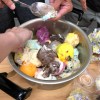 We mixed all 31 flavors of Baskin Robbins ice cream and created a Frankenstein dessert【Video】
We mixed all 31 flavors of Baskin Robbins ice cream and created a Frankenstein dessert【Video】 Starbucks Japan ready to get Year of the Horse started with adorable drinkware and plushies【Pics】
Starbucks Japan ready to get Year of the Horse started with adorable drinkware and plushies【Pics】 Hayao Miyazaki says Happy New Year to Studio Ghibli fans with new art for Year of the Horse
Hayao Miyazaki says Happy New Year to Studio Ghibli fans with new art for Year of the Horse We found possibly the quietest Japanese-style hotel in Tokyo’s bustling Shinjuku district
We found possibly the quietest Japanese-style hotel in Tokyo’s bustling Shinjuku district Cup Noodle tries an authentic Jiro-style ramen, but something’s not quite right
Cup Noodle tries an authentic Jiro-style ramen, but something’s not quite right Hello Kitty Choco Egg figures are an adorable trip through three periods of Japanese pop culture【Pics】
Hello Kitty Choco Egg figures are an adorable trip through three periods of Japanese pop culture【Pics】 Japan’s oldest largetooth sawfish in captivity back on display in Mie Prefecture
Japan’s oldest largetooth sawfish in captivity back on display in Mie Prefecture The best Starbucks Japan Frappuccinos we want to drink again in 2026
The best Starbucks Japan Frappuccinos we want to drink again in 2026 7-Eleven Japan starts new temporary luggage storage service in over 300 branches
7-Eleven Japan starts new temporary luggage storage service in over 300 branches Disillusionment at Tsukiji’s tourist-target prices led us to a great ramen restaurant in Tokyo
Disillusionment at Tsukiji’s tourist-target prices led us to a great ramen restaurant in Tokyo Starbucks teams up with 166-year-old Kyoto doll maker for Year of the Horse decorations【Photos】
Starbucks teams up with 166-year-old Kyoto doll maker for Year of the Horse decorations【Photos】 Tokyo considering law requiring more trash cans following litter increase in heavily touristed area
Tokyo considering law requiring more trash cans following litter increase in heavily touristed area Tokyo’s Tsukiji sushi neighborhood asks tour groups to stay away for the rest of the month
Tokyo’s Tsukiji sushi neighborhood asks tour groups to stay away for the rest of the month Tokyo event lets you travel back in time, for free, to celebrate 100 years since Showa era start
Tokyo event lets you travel back in time, for free, to celebrate 100 years since Showa era start Sanrio theme park in Japan announces plans to expand into a Sanrio resort
Sanrio theme park in Japan announces plans to expand into a Sanrio resort Japan may add Japanese language proficiency, lifestyle classes to permanent foreign resident requirements
Japan may add Japanese language proficiency, lifestyle classes to permanent foreign resident requirements Stamina-destroying “Paralysis Noodles” are Tokyo’s newest over-the-top ramen innovation
Stamina-destroying “Paralysis Noodles” are Tokyo’s newest over-the-top ramen innovation Survey asks foreign tourists what bothered them in Japan, more than half gave same answer
Survey asks foreign tourists what bothered them in Japan, more than half gave same answer Japan’s human washing machines will go on sale to general public, demos to be held in Tokyo
Japan’s human washing machines will go on sale to general public, demos to be held in Tokyo Japan’s deadliest food claims more victims, but why do people keep eating it for New Year’s?
Japan’s deadliest food claims more victims, but why do people keep eating it for New Year’s? We deeply regret going into this tunnel on our walk in the mountains of Japan
We deeply regret going into this tunnel on our walk in the mountains of Japan Studio Ghibli releases Kodama forest spirits from Princess Mononoke to light up your home
Studio Ghibli releases Kodama forest spirits from Princess Mononoke to light up your home Major Japanese hotel chain says reservations via overseas booking sites may not be valid
Major Japanese hotel chain says reservations via overseas booking sites may not be valid Put sesame oil in your coffee? Japanese maker says it’s the best way to start your day【Taste test】
Put sesame oil in your coffee? Japanese maker says it’s the best way to start your day【Taste test】 No more using real katana for tourism activities, Japan’s National Police Agency says
No more using real katana for tourism activities, Japan’s National Police Agency says Starbucks Japan reveals new sakura drinkware collection, inspired by evening cherry blossoms
Starbucks Japan reveals new sakura drinkware collection, inspired by evening cherry blossoms Updated cherry blossom forecast shows extra-long sakura season for Japan this year
Updated cherry blossom forecast shows extra-long sakura season for Japan this year The sake from Evangelion goes great with Japan’s poisonous blowfish…from a can 【Taste test】
The sake from Evangelion goes great with Japan’s poisonous blowfish…from a can 【Taste test】 Nagoya man hospitalized after eating fish with name including “fugu,” a.k.a. “poisonous blowfish”
Nagoya man hospitalized after eating fish with name including “fugu,” a.k.a. “poisonous blowfish” How good is the world’s first Michelin-ranked ramen restaurant? We find out! 【Taste test】
How good is the world’s first Michelin-ranked ramen restaurant? We find out! 【Taste test】 You can now get shaved ice ramen in Japan, and it’s painfully delicious【Taste test】
You can now get shaved ice ramen in Japan, and it’s painfully delicious【Taste test】 How to make faux-fancy blowfish hotpot with cheap takeout sushi【SoraKitchen】
How to make faux-fancy blowfish hotpot with cheap takeout sushi【SoraKitchen】 Is ramen without the “men” a Tokyo dining paradox worth experiencing?【Taste test】
Is ramen without the “men” a Tokyo dining paradox worth experiencing?【Taste test】 Yoshinoya ramen? Yes, it now exists, and it’s awesome【Taste test】
Yoshinoya ramen? Yes, it now exists, and it’s awesome【Taste test】 Michelin-listed ramen restaurant will turn you into a tiger with a single bite
Michelin-listed ramen restaurant will turn you into a tiger with a single bite Instant vs. Restaurant Ramen Project: Moko Tanmen Nakamoto deliciously spicy miso【Taste Test】
Instant vs. Restaurant Ramen Project: Moko Tanmen Nakamoto deliciously spicy miso【Taste Test】 Instant vs. Restaurant Ramen Project: Ippudo spicy miso tonkotsu battle【Taste test】
Instant vs. Restaurant Ramen Project: Ippudo spicy miso tonkotsu battle【Taste test】 We try “the worst-tasting ramen in Japan” – How bad could it be?【Taste test】
We try “the worst-tasting ramen in Japan” – How bad could it be?【Taste test】 New contender for the Akihabara ramen crown: Restaurant run by martial arts champ【Taste test】
New contender for the Akihabara ramen crown: Restaurant run by martial arts champ【Taste test】 Some of the most delicious ramen I’ve had in months…is at a restaurant in Las Vegas?!?
Some of the most delicious ramen I’ve had in months…is at a restaurant in Las Vegas?!? Is Japan’s new Super Thick Ramen worth waiting two hours in the Tokyo cold for?【Taste test】
Is Japan’s new Super Thick Ramen worth waiting two hours in the Tokyo cold for?【Taste test】 Tokyo restaurant serves tapioca bubble tea ramen – Is it crazy good, or just crazy?【Taste test】
Tokyo restaurant serves tapioca bubble tea ramen – Is it crazy good, or just crazy?【Taste test】
Leave a Reply